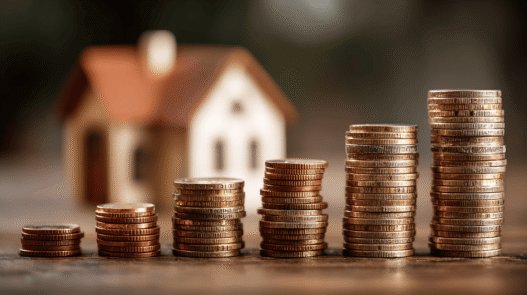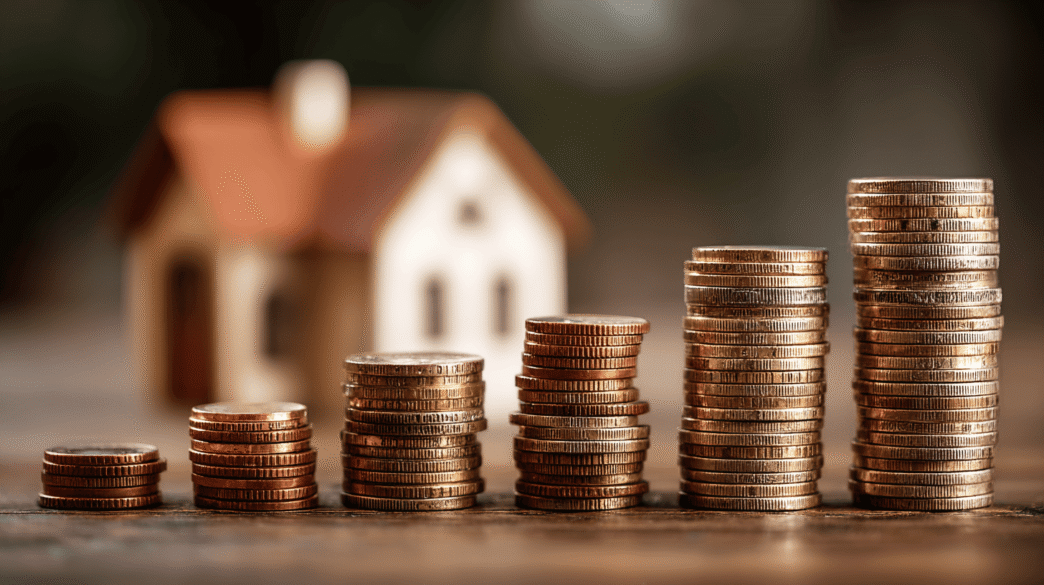Back when people had more time on their hands, window shopping used to be a thing. It was something you could do on vacation, during the holiday season, or on the occasional weekend.
Now, in this digital age when you can buy everything under the sun online, many of us spend what little free time we have “window shopping” digitally.
For me, that means doomscrolling on Zillow, even though I have no intention of buying another property. Something about it feels soothing, not because of the price tags, but because of the predictability.
But if you've been watching real estate prices in 2025 like I have, you might've noticed that things are starting to shift. Again. But this time, it's quiet and uneven.
After years of eye-watering bidding wars, pandemic-fueled migration, and supply crunches, the housing market is no longer surging uniformly.
Instead, it's showing signs of fragmentation.
Some places are holding steady while others are cooling fast. And in a few surprising corners of the U.S., prices aren't just leveling out, they're slipping.
In case you missed it: A 2025 Update on Leif's Passive Real Estate Investment Returns
The National Overview
Nationally, the housing market isn't crashing.
But it's definitely sobering up.
“We're witnessing a housing market in transition,” said Nicholas Godec, head of fixed income tradables & commodities at S&P Dow Jones Indices. “The era of broad-based, rapid price appreciation appears over, replaced by a more selective environment where local fundamentals matter more than national trends.”
The annual gain of home prices fell from 3.4% in March 2025 to 1.3% in June, marking one of the most noticeable declines since the post-COVID boom of 2023.
The sharpest corrections appear to be happening in markets that overheated the most between 2020 and 2022. These include parts of Texas and Florida, which are regions where homebuilders went into overdrive and demand surged during the remote-work wave.
“[T]here are a number of states, particularly Florida and Texas, which already have more for-sale inventory than they did prior to the pandemic, and where demand has weakened,” says Rick Sharga, founder and CEO of CJ Patrick Company. “In those areas, the market is tilting in favor of buyers.”
Image Source: Journal of Consumer Research
Where Prices Are Falling The Most
Below is a table that highlights the top U.S. cities with the greatest annual drops in home listing prices. The data is sourced from Business Insider and the Journal of Consumer Affairs.
| City, State | Median Home Price | YoY Price Drop (%) |
| San Francisco, California | $889,500 | -10.9% |
| North Port, Florida | $427,907 | -10.3% |
| Miami, Florida | $522,500 | -9.9% |
| Flint, Michigan* | $166,414 | -9.6% |
| Crestview, Florida | $417,125 | -9.4% |
| Austin, Texas | $498,500 | -7.7% |
| Kansas City, Missouri | $369,995 | -7.5% |
| Tampa, Florida | $395,000 | -6% |
| Jacksonville, Florida | $384,500 | -5.7% |
| Denver, Colorado | $577,35 | -5.4% |
| Phoenix, Arizona | $499,995 | -5.1% |
| Cincinnati, Ohio | $319,050 | -4.8% |
| Orlando, Florida | $419,950 | -4.3% |
| Nashville, Tennessee | $537,450 | -3.9% |
*Note: Flint famously made headlines in 2014 due to the dangerous amounts of lead found in the city's water system. Residents still worry about water safety, which is a major reason behind the low home prices here.
We can witness several patterns emerging here.
Primarily, the Sun Belt, which saw some of the steepest price acceleration during the pandemic, is now seeing the sharpest drops.
These cities were magnets for inbound migration, speculative buying, and investor flips. But many of those same buyers are now pulling back in the face of elevated mortgage rates and higher living costs.
The sellers, meanwhile, are left to recalibrate their expectations in the face of dropping demand.
For comparison, here's another table that shows the cities with the most affordable houses in 2025.
| City, State | Median Home Price |
| Toledo, Ohio | $190,700 |
| Wichita, Kansas | $218,500 |
| Little Rock, Arkansas | $222,100 |
| Akron, Ohio | $223,400 |
| Pittsburgh, Pennsylvania | $216,800 |
| St. Louis, Missouri | $255,200 |
| Scranton, Pennsylvania | $211,800 |
| Des Moines, Iowa | $285,700 |
| Oklahoma City, Oklahoma | $237,100 |
| Jackson, Mississippi | $196,900 |
Data Source: USA CLI
It's evident, then, that while prices may be dropping in major cities like San Francisco and Miami, the cost of living and other factors still mean that houses there can hardly be considered affordable.
On the other hand, smaller cities, as always, present real estate options that don't mean breaking the bank with hefty mortgages.
Read about: The 2025 Tariff-Driven Selloff – Is This Time Different?
Why These Markets Are Cooling
Higher cost of living and high mortgage rates have caused many residents to move out of states like New York and California in search of more affordable housing.
Meanwhile, inventory levels are also rising in many of these metro areas, while demand is low. This has tipped the balance back in favor of buyers.
In Austin, for instance, home prices are down by more than 7% since last year because the supply of unsold homes has ballooned, but buyers simply aren't biting at pandemic-era price points anymore.
Miami and Phoenix, both hotbeds of investor activity, are also seeing demand taper as borrowing costs remain high.
Remote workers who once fled to warm, low-tax states are returning to office-centric metros or holding off on big purchases altogether.
In Florida, the triple whammy of climate risk, higher property insurance costs, and inflation is taking the edge off what was once white-hot demand.
Jeff Lichtenstein, founder of the brokerage Echo Fine Properties, specializes in Florida real estate, told ConsumerAffairs: “Areas like South Florida with more second home purchases (wants versus need) and hot political issues (think Canadians skipping buying season)…also have an impact.”
To understand this cooling trend, it's worth unpacking the economic forces at play.
There are four macroeconomic drivers affecting affordability and price behavior nationwide:
- Supply and Demand: When demand outpaces supply, prices climb. That's especially true in densely populated cities or high-desirability areas where inventory is scarce. When listings outnumber buyers, prices tend to cool. This seems to be what is unfolding right now, especially in Florida.
- Mortgage Rates: Interest rates are a powerful lever. When borrowing is cheap, more buyers flood the market, which can push prices higher, until rates rise and affordability takes a hit.
- Wages and Employment: A strong labor market supports home buying. Steady income growth gives households more purchasing power, especially in high-cost metros.
- Government Levers: From down payment assistance to tax incentives, federal and state policies can widen access, though they often lag behind market dynamics. Recent policy upheavals have left many wondering if it's the right time for them to take the leap or not.
These factors don't operate in isolation – they work together.
For example, a modest house in a high-cost city with a 6.76% interest rate and climbing utility bills looks far less appealing to a dual-income family than it did when inflation was more muted and you could get a bigger bang for your buck.
Curious about the Upside and Risks of Multifamily Real Estate Investments? Click to learn more.
States with the Highest and Lowest Median Home Prices
As of early 2025, the states with the most expensive and most affordable homes offer a glimpse into the extremes of the American housing market and the sheer range we're working with.
| States with Highest Home Prices | States with Lowest Home Prices | ||||||||||||||||||||||||
|
|
Data Source: RaleighRealty
This kind of disparity is not new, but it's become more consequential as buyers chase affordability.
It's also a reminder that “cooling” doesn't mean “cheap”, it simply means prices are falling relative to a previous high.
States with Favorable ROI
Despite the softening prices in some regions, certain cities still rank high in terms of long-term return on investment. According to Nasdaq, the following states offer a compelling combination of affordability and appreciation potential:
Texas
The Lone Star State is a strong bet for real estate investment thanks to its booming job market, business-friendly tax environment, and relatively affordable housing. Cities like Austin, Dallas-Fort Worth, and Houston continue to attract buyers and renters alike, making Texas a long-term growth market with diverse, high-demand housing options.
Tennessee
Tennessee is a strong real estate investment option thanks to its tax-friendly environment (no income tax), steady population growth, and continued property appreciation. With economic hubs like Nashville, Tennessee offers both strong rental demand and long-term value.
North Carolina
With rapid population growth, a mild climate, and favorable tax policies, North Carolina has emerged as a strong long-term investment. Cities like Charlotte are becoming tech hubs, while Raleigh and the Piedmont Triad offer diverse economic growth and housing demands.
Nebraska
Stable, affordable housing with strong rent-to-price ratios. A robust job market, especially in cities like Omaha, has driven home appreciation (up 36% over the past three years), making it a solid bet for long-term equity growth.
California
Despite high taxes, certain pockets, especially in Los Angeles, offer strong appreciation potential. Up-and-coming neighborhoods like Montecito Heights and El Sereno present prospective buyers with more affordable entry points, with high upside due to scenic views and architectural charm.
Georgia
Steady economic growth, job creation, and business expansion are fueling demand for both residential and commercial real estate. The state's tax-friendly policies and historically appreciating property values make it especially appealing, particularly in the post-COVID migration wave favoring the Sun Belt states.
Nevada
The Silver State features no income tax, business-friendly policies, and a high quality of life with 300 sunny days a year. Its mix of residential and commercial real estate potential, along with corporate incentives, makes it attractive for both individual investors and relocating companies.
Florida
Finally, we have the Sunshine State, which also doesn't tax income. With a strong population growth and a surge in job opportunities (especially in cities like Orlando and Jacksonville), Florida continues to attract investors. The state's popularity among retirees and house flippers adds to its broad appeal for both short- and long-term investment strategies.
What Does This Mean for Buyers and Sellers?
If you're a buyer, you're walking into a more balanced market, especially in Florida's cities. There's more inventory, fewer bidding beards, and increasing room for negotiation.
But if you're a seller in one of these softening metros, you may need to rethink your expectations.
The days of listing on Thursday and closing on Monday with six offers over asking are behind us, at least for now.
Right now, we're diverging. The U.S. housing market is no longer moving in one direction. It's breaking apart into micro-markets defined by lock economics, supply dynamics, and even climate risk.
Whether you're buying, selling, or holding, understanding where the market is heading (and why) is half the battle.
Where do you see the housing market heading by the end of this year? Are you looking to buy or sell? Or are you sitting tight to see how things shake out? Drop your thoughts in the comments, we'd love to hear what's on your radar.
Learn about Underground Real Estate: The High-Yield Asset Hidden In Plain Sight.
FAQs
Q: Why are home prices falling in some cities?
A: Oversupply, high mortgage rates, and weaker demand in overheated markets like Austin and Miami are driving prices down.
Q: Where can I get the best real estate ROI right now?
A: States like Nebraska, North Carolina, and Nevada offer solid returns thanks to job growth, population increase, and favorable tax policy.
Q: How are mortgage rates affecting buyers?
A: Higher rates are reducing affordability, slowing demand, and giving buyers more leverage. For now.
Q: Are there still affordable places to buy a home?
A: Yes. The Midwest and South, including Louisiana and Iowa, still offer more affordable options.
Q: What economic trends impact housing prices most?
A: Supply and demand, mortgage rates, job markets, and government housing programs all play major roles.
Q: Should I buy now or wait?
A: Depends on your market. In softening areas, now might be a good time. In others, waiting could pay off. Consult with an expert, as buying a house is a deeply personal decision and requires rigorous planning.
Q: Do state tax policies matter for homebuyers?
A: Yes. States like Nevada with no income tax can offer better long-term returns, especially for investors.



















